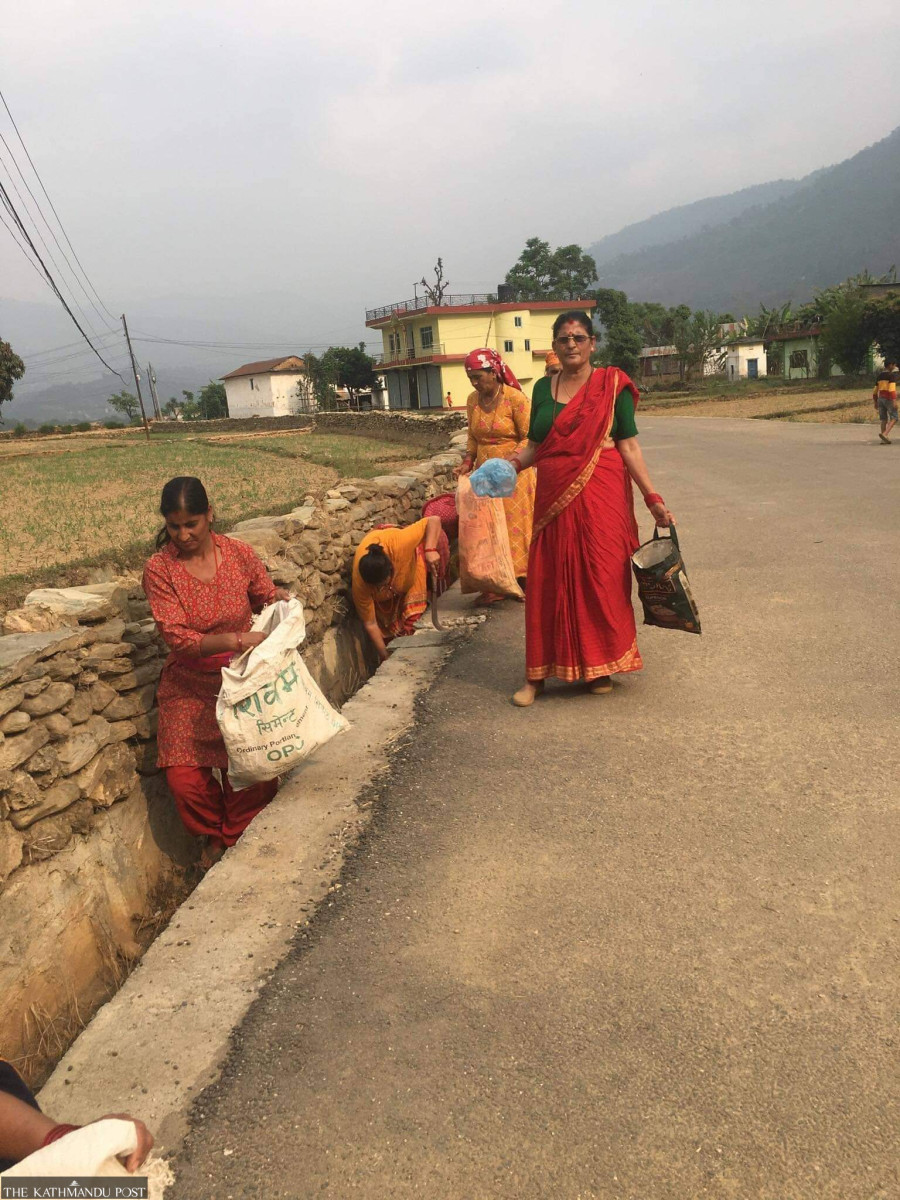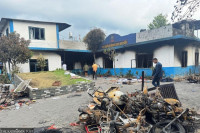Gandaki Province
Villages in Baglung at risk of elephantiasis
Six cases of elephantiasis have been reported in Narayansthan and two cases in Kushmisera in the past 10 months, according to the data of the District Health Office in Baglung.
Prakash Baral
The onset of the summer season has worried health workers in Baglung with mosquito-borne diseases becoming prevalent in Narayansthan of Baglung Municipality-14 and Kushmisera of Jaimini Municipality-1.
According to health workers, patients with lymphatic filariasis, also called elephantiasis, have been reported from these two places in the past year.
Lymphatic filariasis, a mosquito-borne parasitic disease, is caused by filarial worms transmitted by different kinds of mosquitoes, including Culex, Anopheles, and Aedes.
It is the second major infectious disease after leprosy that causes permanent and long-term disability in Nepal.
Six cases of elephantiasis have been reported in Narayansthan and two cases in Kushmisera in the past 10 months, according to the data of the District Health Office in Baglung.
“Baglung 135 cases of elephantiasis between July 2021 and April 2022,” said Dev Prakash Ghimire, public health inspector at the office.
According to Suraj Gurau, chief of the health office in Baglung Municipality, 19 other patients with elephantiasis are taking regular medication for the disease in Baglung Municipality.
The risk of the spread of vector-borne diseases in the communities has become a matter of public health concern, and the local units are encouraging people to adopt preventive measures this summer.
Ram Prasad Khanal, chief of Baglung Municipal Health Branch, says Baglung Municipality plans to spend Rs 2 million this fiscal year to conduct an awareness programme in every ward to inform and educate the local residents about vector-borne diseases and preventive measures to avoid mass breakout of such diseases.
“We plan to implement mechanisms to control the spread of vector-borne diseases in the communities,” he said. “Narayansthan and Kushmisera villages are situated near the banks of Kaligandaki River. The local climate creates a conducive environment for insects and bugs to thrive; therefore, the risk of vector-borne diseases is higher in these areas.”
Baglung Municipality has also started filling ditches, covering open holes and cleaning dirty ponds with the onset of summer.
In Narayansthan, various mothers’ groups, female health volunteers and youth clubs in 16 settlements have been mobilised to provide training and awareness on such diseases, says Rishi Ram Sharma, public health inspector at the health post of Baglung Municipality. “Dengue and Japanese encephalitis are the most feared diseases here.”
According to Sharma, the municipality is raising awareness on sanitation by visiting every household, and with the participation of the locals, work is underway to decrease wastewater generation. The municipality ran a sanitation campaign in September by deploying health workers and locals.
According to Chakra Bahadur Khatri, ward chairman of Baglung Municipality-14, his office has deployed health workers to every settlement in the municipality to provide health services and create awareness about vector-borne diseases.
“We have used some of the ward’s budget to mobilise health workers to villages. We provide them with food expenses. That is the only expense the ward can afford,” said Khatri. “More needs to be done to eradicate the threat of vector-borne diseases in the local communities but the ward alone can’t handle the expenses.”
The ward has also requested the municipality to serve clean and hygienic food and manage garbage and waste generated in dozens of restaurants along the Kaligandaki Corridor and Maldhunga-Kushmisera road section, according to Karki.
“Studies have shown that the Culex mosquito transmits elephantiasis, the Anopheles mosquito transmits malaria and the Aedes mosquito transmits dengue and all of these mosquito-borne diseases have been found in Baglung Municipality,” said Gurau, chief of the health office in Baglung Municipality.
Kushmisera in Ward No 1 of Jaimini Municipality is also conducting awareness programmes similar to that undertaken by Baglung Municipality, says Bhupendra Thapa, ward chairman of Jaimini Municipality-1. “We have deployed health workers to every settlement to prevent epidemics. For now, our ward budget is sufficient to conduct such health programmes,” he said.
According to Sharma, the public health inspector, a study conducted by the Epidemiology and Disease Control Division found mosquitos in Baglung Municipality can transmit nine different types of diseases.
“Most of these infections cause fever and body aches and can be life threatening as well,” said Shailendra Pokhrel, virologist at Dhaulagiri Hospital in Baglung. “Dengue and Japanese encephalitis are the most prevalent here.”
According to the World Health Organisation, elephantiasis has affected 40 million people in 83 countries. Of the affected, one-third are in Africa and India each, while the rest are in other parts of South Asia. The WHO has made a worldwide commitment to eliminate the disease by 2020.




 8.12°C Kathmandu
8.12°C Kathmandu.jpg)










